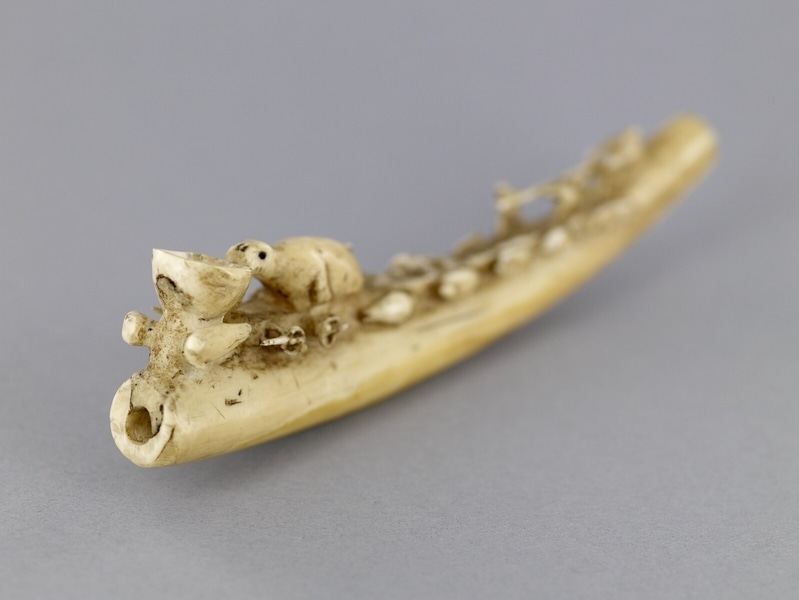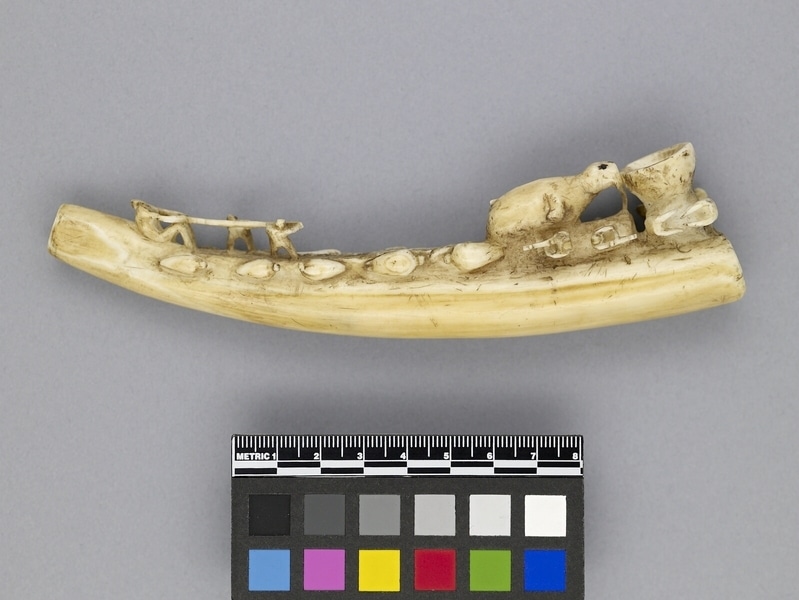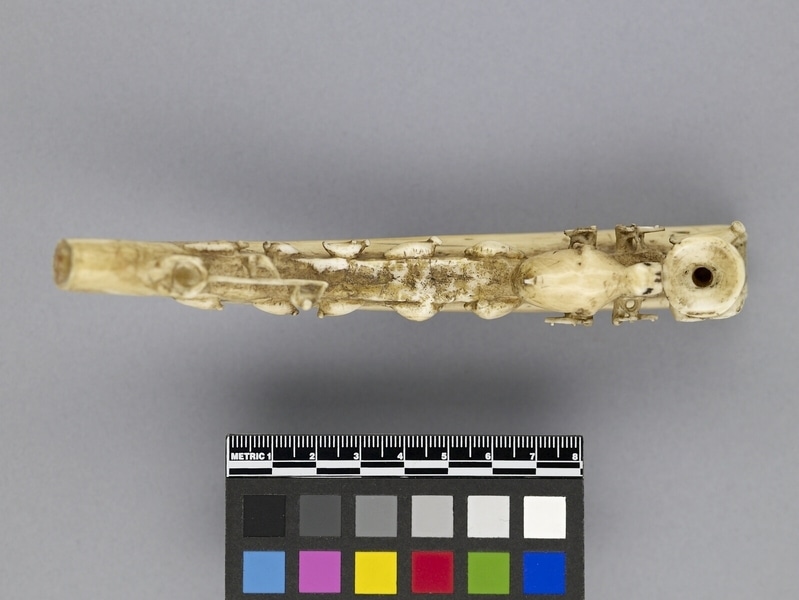Pipe Item Number: Na1104 from the MOA: University of British Columbia



Description
Curved circular pipe with scene in relief on top; round pipe bowl with funnel-shaped interior at one end; stylized seal on side of bowl; two walrus heads on opposite side; larger walrus with head towards bowl above a rectangular platform with two headless figures on each side; each is sitting, back to back, pointing a rifle. One rifle is broken off. Behind large walrus on each side runs a row of five seals, the first two face each other on each side. On top at opposite end from bowl is a semi-reclining headless figure holding a horizontal stick-like object, two smaller standing figures hold up other end of stick. Hole drilled the length of the pipe and through bowl meet first hole. Mottled dentine runs parallel to central hole. Natural tusk colours range from white to brown with greyish areas.
History Of Use
This pipe form was introduced from Siberia which in turn was copied from Chinese opium pipes. Pipes were carved for sale to traders and whalers during the late 1800's and early 1900's.
Cultural Context
trade
Item History
- Made in Alaska, USA during 1900
- Owned by Marianne Koerner and Walter C. Koerner before January 8, 1981
- Received from Marianne Koerner (Donor) and Walter C. Koerner (Donor) on January 8, 1981
What
- Name
- Pipe
- Identification Number
- Na1104
- Type of Item
- pipe
- Material
- walrus tusk
- Manufacturing Technique
- carved, inlaid and drilled
- Overall
- height 1.5 in, width 0.91 in
Who
- Culture
- Inuit
- Previous Owner
- Marianne Koerner and Walter C. Koerner
- Received from
- Marianne Koerner (Donor) and Walter C. Koerner (Donor)
Where
- Holding Institution
- MOA: University of British Columbia
- Made in
- Alaska, USA
When
- Creation Date
- during 1900
- Ownership Date
- before January 8, 1981
- Acquisition Date
- on January 8, 1981
Other
- Condition
- good
- Current Location
- Case 48
- Accession Number
- 0697/0025